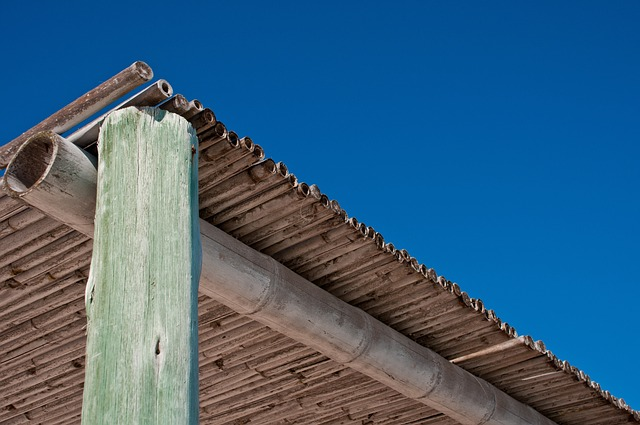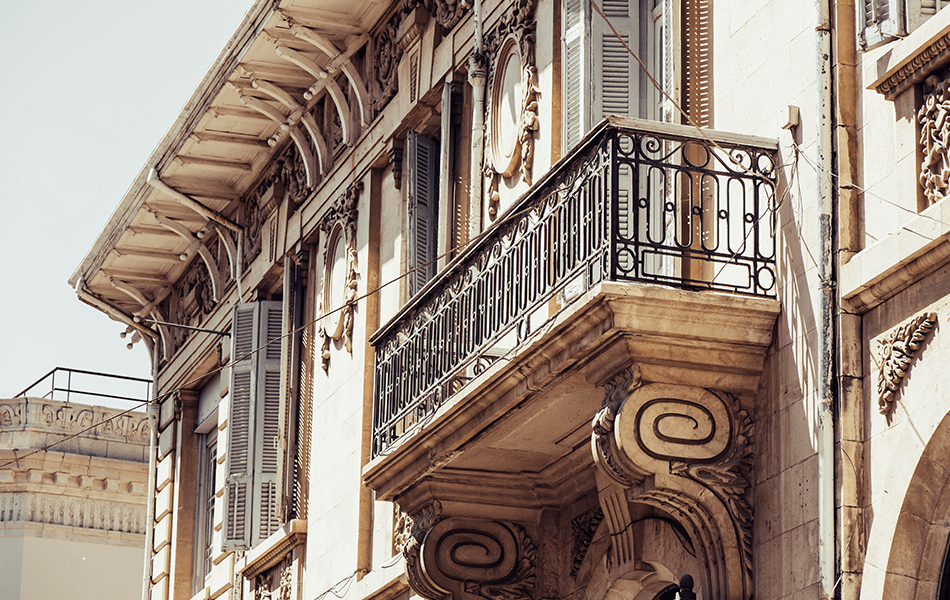The Philippines, a nation composed of over 7,000 islands, is renowned for its rich cultural heritage and vibrant traditions. One aspect of this heritage that stands out is the country’s vernacular architecture. Rooted in indigenous practices and influenced by centuries of cultural exchange, Philippine architecture is a testament to the diverse and dynamic nature of the country’s design aesthetic. Celebrating cultural diversity in design, these styles of Filipino architecture reflect the distinct identities of different regions, tribes, and ethnic groups across the archipelago.
Historical Context of Vernacular Architecture Philippines

The origins of Philippine architecture can be traced back to pre-colonial times when indigenous Filipino communities built their dwellings using natural and locally available building materials. The architecture was shaped by the country’s unique climate, natural resources, and the lifestyles of its inhabitants. These early structures showcased an intimate relationship with nature, utilizing local materials, such as bamboo, thatch, and wood.
Spanish colonial rule in the Philippines from the 16th to the 19th centuries introduced Western influences to the local Philippine architecture. This period saw the fusion of indigenous techniques with Spanish colonial design, resulting in the emergence of distinctive architectural styles like the “bahay kubo” (nipa hut) and the “bahay na bato” (stone house). These structures combined traditional elements with Spanish building techniques, incorporating features such as capiz shell windows, wooden latticework, and high-pitched roofs.
Cultural Diversity in Design
The regional diversity in vernacular architecture in the Philippines showcases the adaptability, resourcefulness, and cultural identity of the Filipino people. Each style of Filipino architecture is a testament to the ingenuity and craftsmanship of the local communities, as well as their deep connection with the environment. Preserving and celebrating these diverse architectural traditions not only honors the past but also serves as a source of inspiration for contemporary design practices, allowing for a harmonious blend of tradition and innovation in Philippine architecture. Exploring the regional diversity of vernacular architecture in the mountain provinces of the Philippines allows us to appreciate the richness and complexity of the country’s architectural heritage.
Here are some examples of notable places in the Philippines known for their vernacular architectural styles:
1) Batanes
Located in the northernmost part of the Philippines, Batanes is known for its stone houses called “vakul” or “ivatan.” These traditional houses have thick stone walls and cogon grass roofs, designed to withstand strong typhoons and harsh weather conditions.
2) Ifugao
In rural areas of the mountainous province of Ifugao, you can find the famous UNESCO World Heritage rice terraces. The Ifugao Filipino people are known for their stilt houses called “noja,” made of wood and thatch, with distinctive sloping roofs.
3) Cordillera Administrative Region
This region in northern Luzon is home to several indigenous tribes, including the Igorots. The traditional houses of the Igorots community, known as “bale,” are constructed using bamboo, cogon grass, and wooden stilts.
4) Bohol
The province of Bohol is famous for its “nipa huts” or “bahay kubo.” These traditional huts are made of bamboo and nipa palm thatch, with elevated floors and a steeply pitched roof.
5) Maranao Region
In the southern part of the Philippines, particularly in the Maranao region, you can find the distinct “torogan” houses of the Maranao people. These houses feature elaborate carvings, colorful decorations, many walls, and distinctive roof shapes.
6) Sulu Archipelago
The Sulu Archipelago is home to the Tausug people, who have their own unique architectural style. The traditional houses of the Tausug culture, called “yakan,” are known for their ornate carvings, vibrant colors, and layered roof designs.
7) Vigan
The historic city of Vigan in Ilocos Sur is renowned for its well-preserved Spanish colonial architecture. The “bahay na bato” or “stone houses” are prominent in Vigan, featuring a mix of Spanish and Filipino architectural design and elements, such as capiz shell windows and wooden latticework.
8) Zamboanga City
In Zamboanga City, you can find traditional houses influenced by Spanish, Malay, and indigenous styles. The “badjao” houses, built on stilts over the water, are particularly unique and reflect the seafaring lifestyle of the Badjao people.
9) Palawan
In Palawan, particularly among the indigenous Palaw’an communities, you can find traditional houses called “batalay” or “bahay kubo.” These houses are elevated on stilts, with bamboo walls and thatched roofs, blending with the natural surroundings.
10) Mindanao
Mindanao is home to various indigenous groups, each with its own style of Philippine architecture. The traditional houses of the Mandaya, T’boli, and Manobo tribes, among others, exhibit unique house designs and materials, showcasing the cultural diversity of the region.
Read also: BRIA Homes Recognized by Pag IBIG as One of the Top Developers in Mindanao
Contemporary Interpretations of Vernacular Architecture in Modern Design
1) Cultural Center of the Philippines in Quezon City
One exemplary project that embodies the contemporary interpretation of vernacular architecture is the Cultural Center of the Philippines in Quezon City. Designed by the renowned Filipino architect Leandro V. Locsin, the Cultural Center stands as an iconic symbol of Filipino identity and artistic expression. Inspired by the vernacular bahay kubo (nipa hut), the center’s design features a series of interconnected structures with dramatic sloping roofs and open-air spaces. Locsin skillfully integrated modernist principles with indigenous elements, creating a space that celebrates both the past and the present.
2) Philippine General Hospital in Manila
Another notable example is the Philippine General Hospital in Manila, designed by the American architect William Parsons during the American colonial period. Parsons combined neoclassical and art deco style influences with local materials and craftsmanship, resulting in a building that is both aesthetically pleasing and functional. The hospital’s facade incorporates intricate details and decorative elements inspired by Filipino motifs, showcasing the fusion of international architectural styles with local sensibilities.
3) Taoist Temple in Cebu City
In Cebu City, the Taoist Temple is a contemporary interpretation of vernacular architecture that celebrates the cultural heritage of the Chinese-Filipino community. The temple’s design draws inspiration from traditional Chinese architectural forms, such as curved roofs, intricate wood carvings, and vibrant colors. The integration of these elements into the modern architectural language creates a space that resonates with the local community and visitors alike.
Conservation and Adaptation
While the Philippines has experienced rapid urbanization, development, and modernization in recent years, efforts have been made to preserve and adapt traditional architectural styles. Architects and designers are incorporating vernacular elements into contemporary buildings, striking a balance between preserving cultural heritage and meeting the demands of modern living.
The use and development of sustainable materials, such as bamboo, is gaining traction in the construction industry. Bamboo’s strength, rapid growth, and versatility make it an ideal choice for architects, for eco-friendly and resilient architecture. Furthermore, incorporating indigenous design elements into public spaces, resorts, and hotels not only promotes the arts and cultural appreciation but also attracts tourists seeking an authentic experience.
Read also: Benefits of Using Bamboo Products and Materials
To showcase how contemporary interpretations and ideas of vernacular architecture can be incorporated into modern Filipino architecture, let us explore the concept of a Bamboo Pavilion. This design takes inspiration from traditional bamboo structures found in Southeast Asia, particularly in the Philippines and Indonesia, and combines it with modern design principles to create a unique and sustainable space.
1) Material Selection
The primary material used for this Philippine pavilion is bamboo. Instead of using it solely for structural purposes, as in traditional architectural designs, techniques of modern architecture such as laminating and treating bamboo for durability are employed. This ensures that the bamboo retains its natural aesthetic while meeting modern standards of strength and longevity. Other sustainable materials, such as recycled steel or environmentally friendly composites, can also be integrated into the design.
2) Contemporary Form and Function
While traditional bamboo structures and construction often feature simple and repetitive forms, the Bamboo Pavilion embraces the modern Filipino architecture movement and a more contemporary design and construction language. It incorporates clean lines, geometric shapes, and innovative spatial arrangements to create a visually striking and functional space. The Philippine pavilion building can be designed as an open-air structure, providing shade and ventilation, or enclosed with lightweight and transparent materials to adapt to different climates and site conditions.
3) Passive Design Strategies
Taking inspiration from traditional bamboo architecture, the pavilion incorporates passive design strategies for natural cooling and ventilation. High-pitched roofs allow hot air to rise and escape, while bamboo louvers and screens provide shading and privacy. Openings strategically placed to catch prevailing winds facilitate natural cross-ventilation, reducing the need for mechanical cooling systems. This approach ensures a comfortable and sustainable space.
4) Integration of Modern Technology
Contemporary interpretations of vernacular architectural style can seamlessly integrate modern movement and technologies. for example, The Bamboo Pavilion can incorporate solar panels on the roof to harness renewable energy, LED lighting for energy efficiency, and rainwater harvesting systems for sustainable water management. These technological advancements blend harmoniously with the traditional bamboo structure, enhancing its functionality and sustainability for future generations.
5) Cultural References
To celebrate the cultural diversity embedded in the vernacular architectural style, the Bamboo Pavilion can incorporate decorative elements inspired by the local culture or traditions of the site. This could include intricate bamboo weavings, patterns, or carvings that reflect the identity and history of the region. By incorporating these cultural references, the pavilion becomes not only a functional space but also a cultural center and a symbolic representation of local heritage.
Conclusion
Philippine vernacular architecture stands as a testament to the country’s rich cultural diversity and historical legacy. Celebrating the multitude of indigenous architectural styles found across the archipelago, it reflects the harmonious relationship between humans and the environment. As the nation continues to progress, there is increasing recognition of the value of preserving and adapting these architectural traditions. By embracing and incorporating the beauty and functionality of vernacular design into modern architecture, the Philippines can ensure a vibrant future while staying connected to its roots.





